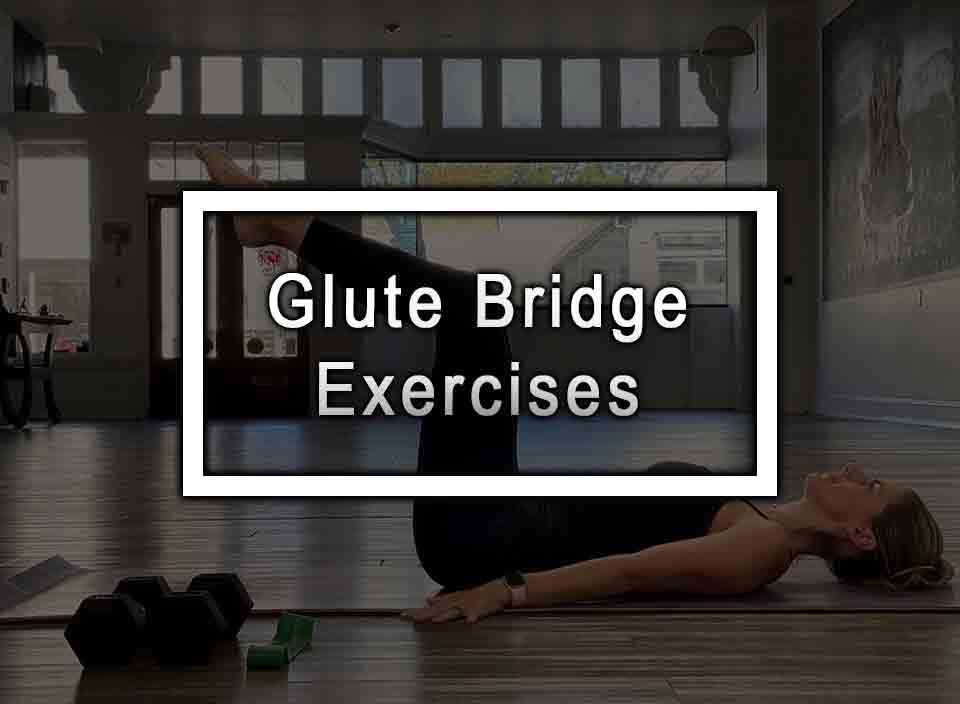Here Are Glute Bridge Exercises Benefits, And How To Perform
When we think of exercises to improve our glutes, the first exercises that come to mind are squats and lunges. But one of the most underrated exercises for glute development is the glute bridge. Glute Bridge is a simple exercise that works the hip extensor muscles (glutes and hamstrings) and also helps in building core strength. The exercise can be done with or without weights, and it is suitable for individuals of different fitness levels. In this article, we are going to explore the benefits of glute bridge exercises and how to perform them correctly.
Benefits of Glute Bridge Exercises
Develops Strong Glutes
Glute bridge exercises are great for developing strong and toned glutes, which can improve overall lower body strength and power. Glute bridges work to target the gluteal muscles, which play an important role in hip extension, which is necessary for activities such as walking, running, and jumping. Strong glutes can also improve posture and reduce hip, knee, and lower back pain.
Improves Hip Mobility
Glute bridge exercises also help to improve hip mobility. Tight hips can be a result of sitting for long hours or performing exercises that do not incorporate hip extension. Glute bridge exercises help to stretch and activate the hip muscles, which can improve mobility and performance in various lower-body movements.
Increases Core Strength
The glute bridge exercise is not only beneficial for your glutes and hip muscles, but it also targets the core muscles. A strong core is essential for good posture and spinal stability. Glute bridges work your core muscles, which strengthen your lower back muscles, abs, and obliques.
Enhances Running Performance
Strong glutes are a key factor in improving running performance. Glute bridge exercises can improve glute strength and power, which translates to better running speed and endurance. Additionally, exercise can help reduce the risk of injuries that occur as a result of weak glutes, such as IT band syndrome and patellofemoral pain syndrome.
How to Perform Glute Bridge Exercises
- Lie flat on your back with your knees bent and your feet flat on the ground.
- Keep your arms by your sides.
- Tighten your glutes and raise your hips so that your body forms a straight line from your shoulders to your knees. Your upper back and shoulders should remain on the ground.
- Hold the position for 2-3 seconds and then lower down. This completes one repetition.
- Perform 3–4 sets of 10–15 repetitions.
If you want to increase the intensity of the exercise, you can use resistance bands or weights. Placing a resistance band around your thighs, just above your knees, will make the exercise more challenging by forcing your hips to work harder to stay elevated. You can also add weights or a barbell across your hips to increase resistance as you perform the exercise.
Common Mistakes to Avoid
Raising Your Hips Too High
While performing glute bridges, the goal is to maintain a straight line from your shoulders to your knees. It is easy to raise your hips too high, which can cause back strain and poor form. To avoid this, concentrate on lifting your hips just to the point where there is a straight line from your knees to your shoulders.
Not Engaging the Glutes Adequately
It is important to engage the glutes as you raise your hips. Relying on your lower back muscles to lift your hips can cause discomfort and injury. To make sure you’re engaging your glutes, clench your butt muscles as you lift your hips.
Allowing Your Knees to Flare Outwards
It’s important to keep your knees aligned with your toes as you lift your hips. Allowing your knees to flare outwards can cause strain on your knees and negatively affect your form. To prevent this from happening, concentrate on pushing your knees outward as you raise your hips.
Conclusion
In conclusion, glute bridge exercises are a great way to build strong glutes, improve hip mobility, and increase core strength. It is an easy and versatile exercise that can be performed anywhere, with or without weights. To prevent injury and maximize the benefits of the exercise, it is essential to perform the exercise with proper form and avoid common mistakes. Incorporating glute bridges into your workout routine can be a beneficial addition to your fitness plan.
Glute Bridge Exercises FAQs
Here are the most common questions about glute bridge exercises.
1. How many glute bridge exercises should I do?
It is recommended to perform 2-3 sets of 10-15 repetitions of glute bridge exercises, 2-3 times per week.
2. Can I do glute bridge exercises every day?
It is not recommended to do glute bridge exercises every day, as your muscles need time to rest and recover after a workout. It is best to allow at least one day of rest between glute bridge workouts.
3. What are some variations of glute bridge exercises?
There are several variations of glute bridge exercises, including single-leg glute bridges, banded glute bridges, weighted glute bridges, and elevated glute bridges.
4. Can I do glute bridge exercises without weights?
Yes, you can do glute bridge exercises without weights. Simply use your body weight as resistance.
5. How can I make glute bridge exercises more challenging?
You can make glute bridge exercises more challenging by adding weight, using resistance bands, or trying single-leg variations.
6. Are glute bridge exercises safe for everyone?
While glute bridge exercises are generally safe for most people, it’s always best to check with your doctor or a certified trainer before starting any new exercise program.











